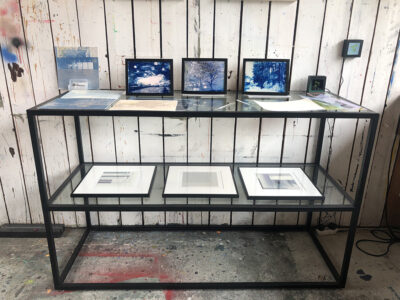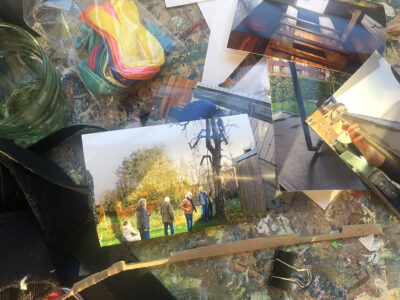29 May 2024
Interview
There is something beautiful in labour and time, Isamo Thissen
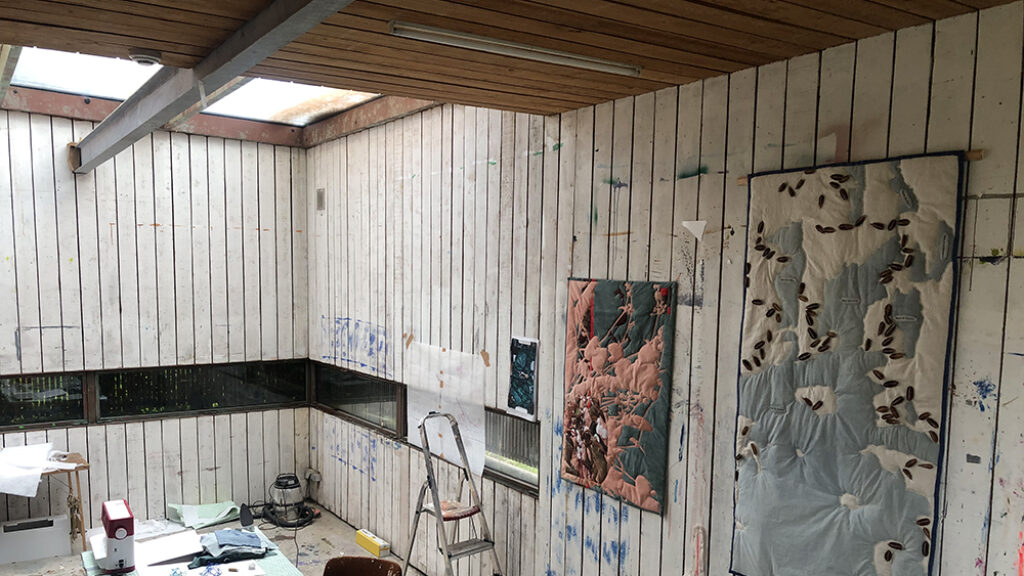
Because selection for the Van Gogh Artist in Residence takes place once every two years, it took at least another year before artist Isamo Thissen moved to Zundert. Her initial plan changed several times before she moved into the sexton’s house for a month. Vincent van Gogh is undoubtedly a good painter, but she had some difficulty with the Vincent theme because of its commercialism and did not want to be yet another person painting sunflowers. Nature became her starting point when she visited five beautiful nature reserves with the idea of working with the photographs she took there.
How did you incorporate Vincent into your work period?
I started from my own working method and looked for a theme within it. I noticed that all his paintings have titles that literally describe what can be seen in the work. These are often the titles he described in his letters to his brother Theo. The titles leave little to the imagination, so my plan was to use the title and give my interpretation of it. To do this, I used the photographs I took here – I went for lots of walks and bike rides – and I also brought some photographs with me. And then it all happened very quickly. It’s nice to let go of my own themes. Of course, there is always something of myself in it, but the work would not have been created if I had not been here.
And which titles did you choose?
There are many books here, including one with a chronological list of all his works, with titles. This allows me to see the influences on his work and how he gradually became rougher and looser in his style. I chose titles that I wanted to work with or that I liked. For example, the title: Garden with Lovers. The work is a bit pointillistic and somewhat sweet. This title made me wonder: “Who are my loved ones in the garden?” That led me to a photo I took last summer in the south of France of a field full of tens of thousands of snails crawling over each other. The result of a huge snail orgy. If that’s not love in the garden…
The other shapes in the work are the silhouettes of winter purslane from the garden, which unfortunately the garden volunteers have removed. Vincent’s life is also tragic, which is why I included this winter purslane in this work. Even the edge of the studio where the winter purslane stood next to it reappears as a line. The photo of the snails comes from France, where Vincent lived during the last years of his life. These are the small connections that arise in this way.
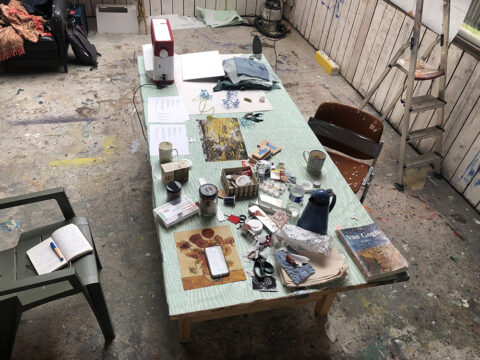
Photo by Esther van Rosmalen

Photo by Esther van Rosmalen
And what was the first piece you created here?
It was titled Fishing Boats on the Beach at Les Saintes-Maries-de-la-Mer. The first logical step was to start with a map, because that was closest to my own theme, and I wanted to do something with these specific nutshells because they look so much like boats. I once bought these shells at a flea market and now I can use them. This is the first time I have allowed 3D objects and found objects into my work.
I think Vincent’s original painting is a beautiful work, but something is not quite right. The boats have no shadows, just like in the Japanese prints he used as inspiration. He also made a watercolour of the same boat in which the boats are strongly outlined, which also has a Japanese feel to it. In my version, I have given the map the leading role and left the “sea” of the map empty, which is also a Japanese influence. I want to use that part for projection. I still have to edit the film. I did make some videos here while painting the canvases and want to see if this adds value. There is something beautiful in labour and time. That is why I think it is important that you see something of the process reflected in the work.
And those dyed fabrics were also made here. Is that something new?
As an artist, I mainly work with textiles and dyes. I took a photo from above of the dye bath in which the canvases lie during the dyeing process. What is new is that I had that photo digitally printed on cotton and incorporated it into a textile cube, the sides of which are made of the dyed fabric. It is my first three-dimensional work.
In the presentation of my work in the gallery, I want to reflect elements of the process, for example by leaving pins in the fabric. I consider the creation of the work to be an important part of the concept, which is why I want to present my work with a wink, in order to draw attention to the process. I am considering adding the dyeing gloves to this work, entitled Starry Night. The gloves have a big effect on the look of the work and change its meaning. I still need to think about it, although I do think it’s a good combination: the bright yellow of the gloves and the deep blue of the paint bath. The combination of yellow and blue also corresponds to Vincent’s original Starry Night.
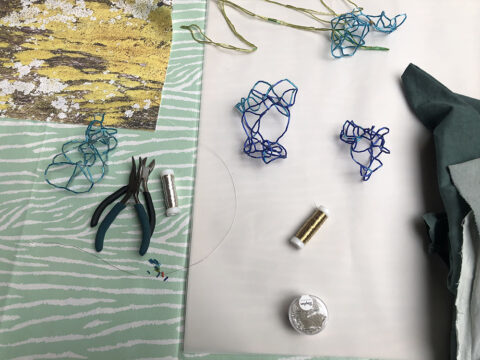
Photo by Esther van Rosmalen
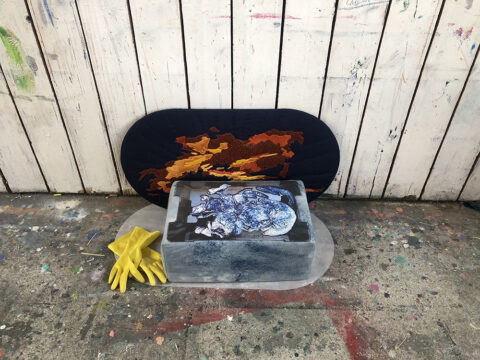
Photo by Esther van Rosmalen
Have you tried anything else new?
I made a triptych entitled: Cornfield under stormy skies. It turned out to be a double-sided quilt. This is the first time I’ve done something like this and it was a struggle, really difficult. I often had to take parts apart and put them back together again because it has to be right on both sides. The fabric comes from the thrift shop; they are old sheets that I dyed. It would be a shame to buy new fabric when you can find good material like this. Mattress covers always have a stitched corner, which I cut open, creating a corner in the fabric and giving my work that shape. I really like it; I wanted to move away from the square frame. The quilt will be hung in the gallery so that you can also see the back, where I have added an embroidery of a girl, also from the thrift shop. It’s mainly about the colours that match another part of the triptych: a pill-shaped panel on which my representation of a stormy sky can be seen. The third part is a fabric collage of shapes and stitching that I’m going to hang in front of the window, making the work transparent and revealing the layers in a different way. I had actually made this one earlier. I wanted to make one here too, but there’s not that much time, so I think it’s okay.
So you would have liked it to last longer?
Yes, it’s a great place, with beautiful light, it’s right in the centre and quiet, except that quite a lot of people would prefer to come in, so I sometimes lock the door. I don’t mind people looking, it’s not obvious to everyone that art is also made and that this takes place in a studio, but I also need to be able to work. What’s especially nice is that I don’t have to take anyone else into account here. I’m a night owl and can now work long hours, and when I wake up, I continue. I have also been home in between, as there are obligations I can’t stop. That’s why I’ve started some smaller works that I can take home to continue working on, such as this one entitled: Reclining Female Nude. For this, I started with a photo of a sea cucumber. I researched whether it is female, which is difficult to see, but it turned out to be correct. In any case, the sea cucumber is a reference to the subject because this skin-coloured creature has adopted the same posture as the more classic reclining female nudes.
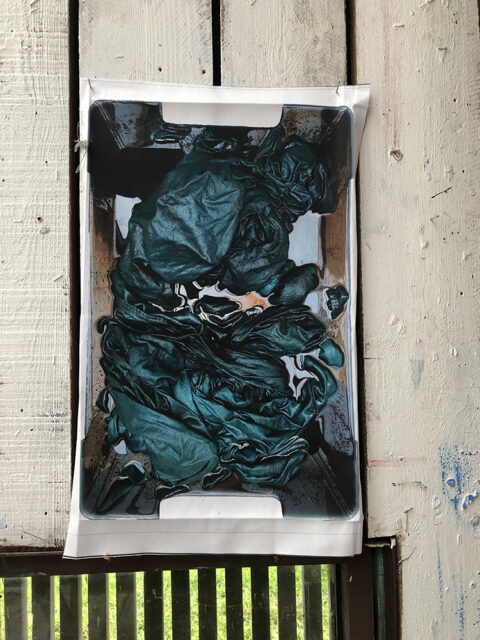
Photo by Esther van Rosmalen
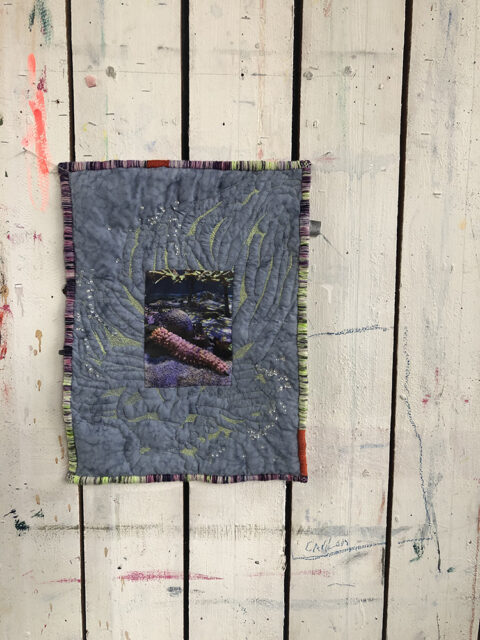
Photo by Esther van Rosmalen
And I see you’re also working with plants. Can you tell me a bit more about that?
I’m not going to show the Judas penning hanging on the wall. I started it because I wanted to paint, like Vincent, but I’m just not very good at it. Actually, I’m a little afraid of the endless possibilities of paint. I chose this subject because he painted a lot of flowers. Those works have titles such as: Thistle, Sunflowers in a Vase. An easy subject to continue with. I’m working on the irises because I think it’s a beautiful painting and I want to continue making three-dimensional works, so I’m making “flowers” with glass beads. It’s fun because I’ve never done this before, but I’m still figuring it out. When is it good and when is it not? When they don’t look like irises, they’re actually the best.
And what new experiences have you gained from this work period?
I want to do good work, but not everything depends on that. I am now allowed to create something without knowing whether I will continue with it, and that is very liberating. For the first time, I have found a way to work in three dimensions, which I hadn’t been able to do before. I noticed that when I build a form from scratch, it doesn’t work. This time, I worked with photographs that originated from a different concept than my usual work, which made the step to three dimensions suddenly obvious. It feels a bit like cheating, but it simply has a different value. The presentation also plays a role; my Starry Night is based on the shape of the container in which the paint is stored. That work therefore belongs on the floor, because that is how it was created. When you look at it on the wall, it is something else. And, which is also very important to me, the position of this work is also a reference to the process. It’s especially nice that this work came about much more quickly. I’ve been looking for a way to be able to take quick steps for a long time. That’s the discovery here. I didn’t expect this, but I found it.
Esther van Rosmalen, May 2023

